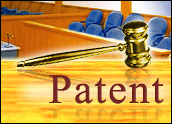
Imagine preparing for a major test based on two assigned essay questions. You read and analyze both, perhaps hire a tutor for a few thousand dollars, pay a large exam fee, and confidently take the test. The instructor says that your answers were outstanding, but instead of passing the test, you fail.
That’s because the instructor added two new essay questions that you never had a chance to answer. Without responses to those new questions, you cannot pass. The instructor says you may retake the test but does not promise to restrict it to the four essay questions you’re now aware of, and you must pay another huge fee. Welcome to the new world of patent law.
As a patent practitioner for nearly 25 years, I have seen it all — or so I thought. Apparently, I have been living under the delusion that patent prosecution was a fair process. Sure, you sometimes get a patent examiner who is difficult, but most are willing to work with you.
For the last year, however, some of my dealings with the U.S. Patent & Trademark Office have gotten troubling, with unfairness cropping up on occasion — but to the USPTO, it is business as usual.
My issue is one of fairness in the process and fairness to my clients. Overall, when dealing with an administrative agency, whether the federal USPTO or the local DMV, one must adhere to the protocols attendant to the process, particularly initiating, administrating and concluding.
For patenting, after initiating or filing a patent application, you enter an administrative period called “patent prosecution,” which is in essence a negotiation between the applicant and the Patent Office about the precise elements of the invention, as set forth in the language of the patent claims. The process concludes with the issuance of a patent or abandonment by applicant.
Patent Poker
The job of the applicant and counsel is to obtain claim coverage as broad as possible, as befits the patent description. The job of the USPTO, however, is to be a bulwark against broad patent claims. Many small inventors trying to handle inventions on their own, thereby avoiding patent attorney fees, fail to realize that.
The USPTO is not on your side. Instead, the USPTO is on the side of humanity — all Americans in particular — just as it should be. Thus, there is a tension in the negotiation.
Examiners are normally faithful government employees doing a good job. However, they are also normal human beings trying to do a great job under difficult circumstances. After reviewing or examining a submitted patent document, the examiner files a first analysis, or Office Action, which is usually Non-Final — that is, the matter remains open administratively.
In this Non-Final Action, the examiner sets forth the particular reasons why the submitted invention is not allowed. For example, another patent or a public article that predates the invention, which is termed “prior art,” may stand in the way of patenting.
The applicant or counsel then submits a Response rebutting the examiner’s contentions and perhaps amending the patent claims, that is, narrowing them to better distinguish the claimed invention from the known prior art by adding more details or limitations. Often this is merely a chance to get the examiner to understand the nuances of the new invention.
The examiner then either capitulates, agreeing with the applicant and allowing the case to become a patent, or disagrees with the applicant and files a Final Office Action, which brings the entire negotiation to a conclusion. In essence, in the poker game of patenting, the examiner has administratively “called,” and both sides know the others’ cards.
New Rules
Lately, there has been a substantial increase in another form of finality, which is quite unfair to applicants and the patent system, in which extra cards are dealt from the deck — or new essay questions added, unbeknownst to the test taker.
Instead of reaffirming their earlier rejection, examiners are now agreeing with applicants’ positions and withdrawing the earlier rejections and cited references. This normally would mean allowance — but in these cases, the examiners also then cite entirely new references and arguments against the patent claims.
Whereas applicants overcame references A and B by their Response, references C and D are now cited in their stead, and since the negotiation is administratively closed, applicant is effectively unable to answer, rebut or reason with the examiner about these new references. The examiner has the right to keep the action open and hear the new answers but instead chooses not to. Instead, the test is marked failed and final, and no further argument will be heard.
In patent poker, the Office, after calling, has switched its cards and made a new bid with no counterbid possible. Further, to the Patent Office it is the applicant’s fault! By adding more details to a claim to narrow an invention — a time-honored practice that is both necessary and at the heart of the process — the applicant has made the examiner’s job overly complicated, necessitating finality in the Office’s view.
Indeed, almost any Response can elicit a Final Office Action with new citations. In essence, some examiners are pushing their cases forward — that is, forcing applicants to re-file their cases to start over, with a hefty new governmental fee and extra examiner work credits. Some examiners have thus changed the nature of the patent game and placed a tax upon innovation.
Simple Cure
Although the job of a patent examiner is a difficult one, the determinations made must be fair. The American patent system, the sine qua non of the world, must be fair to all — to the examiners and even more particularly to the applicants.
Unfair finality means more cost to the applicants and delay of critical innovations to the marketplace — and it diminishes the patent system. Although examiners are under a lot of pressure, the USPTO must prevent the perceived unfairness of citing new references and new reasons for rejection and then forcing finality, despite the applicant’s having had no prior knowledge of them and no chance to administratively rebut them except through costly appeal or re-filing.
A simple cure would be to keep the case administratively open with a second, Non-Final Office Action, giving the applicant the chance to rebut — but this traditional practice is no longer considered efficient, and examiners are discouraged to do this.
To many, these finality pushes are perceived as a naked revenue-generation mechanism. It is rumored that the examiners’ union, with members complaining of overwork and perceived lack of sufficient credit hours to process cases, may be sympathetic toward its members’ use of this unfair practice. The USPTO is currently reviewing the situation in an effort to make the process fair, but the offending practice is still being condoned by officials, despite complaints.
Since the U.S. has a strong identification with the principle of due process, it is clear that something needs to be done to make the patent process fair. Small companies and individual inventors do not have the funds to play this game, particularly in view of the great governmental fee increases in the recent America Invents Act. Without fairness in the process, innovation and America suffer. Raymond Van Dyke is a Patent Attorney and Educator in Washington, DC

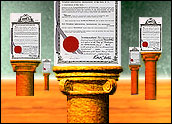
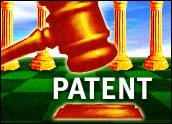
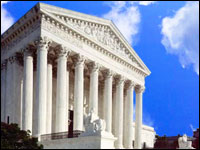
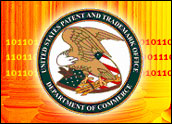
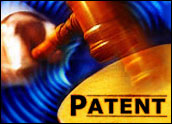











































Social Media
See all Social Media